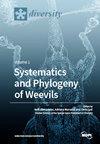林奈时代之前可能失败的地中海引进:棕贻贝的档案案例研究
IF 2.1
3区 生物学
Q2 BIODIVERSITY CONSERVATION
引用次数: 0
摘要
大多数物种从一个供体到达一个受体地区,并不能成功地建立长期的自我维持的种群。然而,成功的引进比失败的要有更好的记录,特别是那些发生在林奈二项命名法出现之前或附近的引进。我们在此报告了18世纪中期(可能是在1750年或1751年)的一种外来贻贝作为船体上的污物从摩洛哥西海岸(大西洋)运输到马赛港(地中海)。这种外来贻贝存活了好几年,被认为可能是棕色贻贝,一种与温水有亲缘关系的物种,很久以后成为世界海洋几个地区的入侵物种。在18世纪和19世纪早期的文献中提到了这一事件,认为那些采集贻贝的“好奇者”和“业余爱好者”要为贻贝的灭绝负责。更现实的假设是,在小冰期(LIA)的背景下,经过相对温和的几十年,贻贝种群没有在严寒天气条件的回归中存活下来。这些结论是从历史资料中推断出来的,因此值得讨论。本文章由计算机程序翻译,如有差异,请以英文原文为准。
The Possible Failed Pre-Linnaean Introduction in the Mediterranean Sea: An Archival Case Study of the Brown Mussel Perna perna
Most species arriving from a donor to a recipient area do not succeed in establishing long-lasting self-sustaining populations. However, successful introductions are far better documented than those that failed, especially those occurring before or near the advent of the Linnaean binomial nomenclature. We report here an introduction from the mid-18th century (possibly in 1750 or 1751) of an exotic mussel transported as fouling on ship hulls from the western coast of Morocco (Atlantic Ocean) to the port of Marseilles (Mediterranean Sea). The exotic mussel, which survived several years, has been identified as probably being the brown mussel, Perna perna, a species with warm-water affinities, which much later became invasive in several areas of the world ocean. The documents of the 18th and early 19th century, which mentioned the event, held ‘the curious’ and ‘amateurs’, who harvested the mussels, responsible for its extirpation. More realistically, it is hypothesised that the mussel population did not survive the return of severe cold weather conditions, after a few relatively mild decades, in the context of the Little Ice Age (LIA). These conclusions were deduced from historical data and are therefore open to discussion.
求助全文
通过发布文献求助,成功后即可免费获取论文全文。
去求助
来源期刊

Diversity-Basel
Environmental Science-Ecological Modeling
CiteScore
3.40
自引率
12.50%
发文量
925
审稿时长
11 weeks
期刊介绍:
Diversity (ISSN 1424-2818) is an international and interdisciplinary journal of science concerning diversity concept and application, diversity assessment and diversity preservation. It is focused on organismic and molecular diversity. It publishes reviews, regular research papers and short notes in the regular issues. Related news and announcements are also published. Our aim is to encourage scientists to publish their experimental and theoretical results in as much detail as possible. Therefore, there is no restriction on the length of the papers. Full experimental details must be provided so that the results can be reproduced.
 求助内容:
求助内容: 应助结果提醒方式:
应助结果提醒方式:


